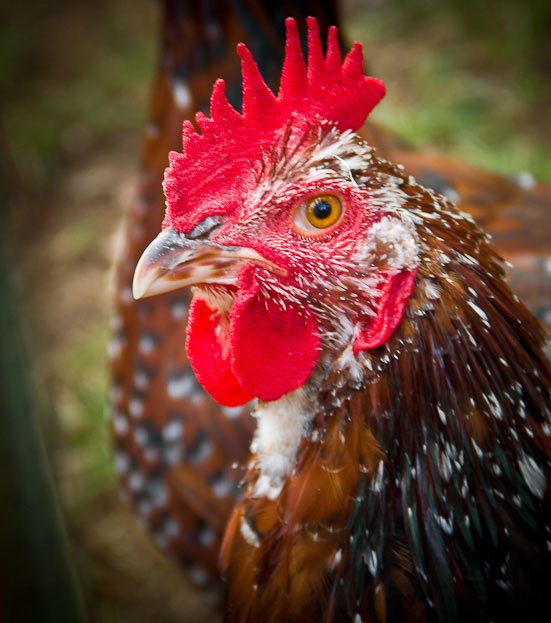I'm posting this in case someone might be considering getting chickens, and they're looking for a little information.
Beginning Jan. 6 through Feb 4, our 6 hens have produced 128 eggs. That comes out to a little over 4 eggs per day, average. Although we don't weigh the eggs, I think most would range in the large classification. Quite a few would fall into medium, and only very rarely would they be small. Egg cost for feed only is about $1.92 per dozen. We're happy with that.
We have a small light bulb (maybe 10 watt) on 24/7, only because our timer has seen better days.
We do not use any heat, but the coop is minimally insulated, ceiling and walls (1 1/2" - 2" foam insulation). Inside temperature is very little warmer (if any) than the outside temperature. We do use a cookie tin water heater with a 40 watt bulb, although it can't be considered a heat source for the coop. The 40 watt bulb has kept the water from freezing, even to slightly below zero, our coldest so far.
Ventilation has been reduced in the very cold snaps (around zero degrees F) to maybe 2 square feet or so. This doesn't seem to be detrimental, short term. When it warms into the teens at night, we open up more ventilation.
We have been putting petroleum jelly on their combs, wattles and ear lobes about once per week. Most have suffered minimal frostbite (not problematic) before we went to once per week. No problem with frostbite since.
The Speckled Sussex seem to be a friendly breed. Our cockerel tried to show me he was the boss a few months ago, but I made sure he understood I was the head rooster. There has not been a problem since.
The only cons I can think of about this breed is that they might have a problem with frostbite if you enjoy cold winters, unless you regularly put petroleum jelly on the combs.
We've had the chickens since last April. They were a day or two old when we got them. Meet Eric --

Beginning Jan. 6 through Feb 4, our 6 hens have produced 128 eggs. That comes out to a little over 4 eggs per day, average. Although we don't weigh the eggs, I think most would range in the large classification. Quite a few would fall into medium, and only very rarely would they be small. Egg cost for feed only is about $1.92 per dozen. We're happy with that.
We have a small light bulb (maybe 10 watt) on 24/7, only because our timer has seen better days.
We do not use any heat, but the coop is minimally insulated, ceiling and walls (1 1/2" - 2" foam insulation). Inside temperature is very little warmer (if any) than the outside temperature. We do use a cookie tin water heater with a 40 watt bulb, although it can't be considered a heat source for the coop. The 40 watt bulb has kept the water from freezing, even to slightly below zero, our coldest so far.
Ventilation has been reduced in the very cold snaps (around zero degrees F) to maybe 2 square feet or so. This doesn't seem to be detrimental, short term. When it warms into the teens at night, we open up more ventilation.
We have been putting petroleum jelly on their combs, wattles and ear lobes about once per week. Most have suffered minimal frostbite (not problematic) before we went to once per week. No problem with frostbite since.
The Speckled Sussex seem to be a friendly breed. Our cockerel tried to show me he was the boss a few months ago, but I made sure he understood I was the head rooster. There has not been a problem since.
The only cons I can think of about this breed is that they might have a problem with frostbite if you enjoy cold winters, unless you regularly put petroleum jelly on the combs.
We've had the chickens since last April. They were a day or two old when we got them. Meet Eric --

